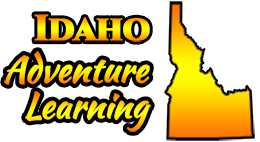Day One
Submitted by Brian Zuber on Mon, 2016-07-11 00:00
We're about halfway through our first day of "Adventure Learning" with the MILES project. After icebreakers and introductions, we covered some basics of the program and the science of hydrology. One thing I find interesting about opportunities like this is how many different organizations come together and acquire funding to pursue a scientific project. The MILES project (Managing Idaho's Landscapes & Environmental Services . . . I think) is a partnership between Idaho's three main universities to better understand how Idaho's growing population affects our resources, particularly water and "ecosystem services". The project involves the Boise Watershed Dept, MOSS (McCall Outdoor Science School) and other stakeholders, plus we'll be visiting and learning from folks all over our watershed about water issues. The project is funded by an EpSCOR grant through the NSF (National Science Foundation, a federal agency), and our small piece of the project is this week-long teacher training workshop so we can bring a better understanding of our valley's water issues to our classrooms.
Our "blog question of the day" is "How are we connected to the Boise River watershed? A watershed is a geographic region where all precipitation flows into a specific body of water, in this case, the Boise River. Treasure Valley water use is close to 70% groundwater sources and 30% from the BR watershed. We use this water for our domestic uses (drinking, cooking, washing, gardening, etc), but also industrial and agricultural uses as well. The Boise River also helps recharge our groundwater system, so we rely heavily on this water source. With current predictions of population growth in the Treasure Valley and climate change, our water sources are expected to become both more scarce and have a higher demand put upon them. Which is why the point of the MILES project is to better understand this resource so that we can better manage it going forward into the future.
For my digi-learners and (hopefully) student followers, I will pose the same question to you. Take a few moments and reflect on how you and your family personally use water, both inside and out of your house. List as many uses you can think of, that you have for our local water resources.

Comments
Day 1
A very thorough explanation of the local water project and it funding sources. It's good to be reminded of all the aspects of last year's impact and potential for this year.
You asked us to think about the water use in our lives and how it relates to the Boise river watershed. There is a strong gut reaction from deep within about that one. I feel very strongly about waisting our previous resource. From the length of my showers, to the watering time of my sprinklers on a daily basis, I believe that water is as valuable as a previous metal. Fines should be assessed to those who misuse water, like schools and businesses who have no need to keep the grass green.